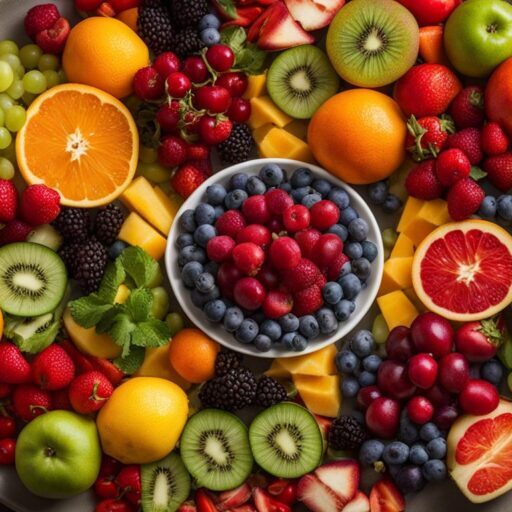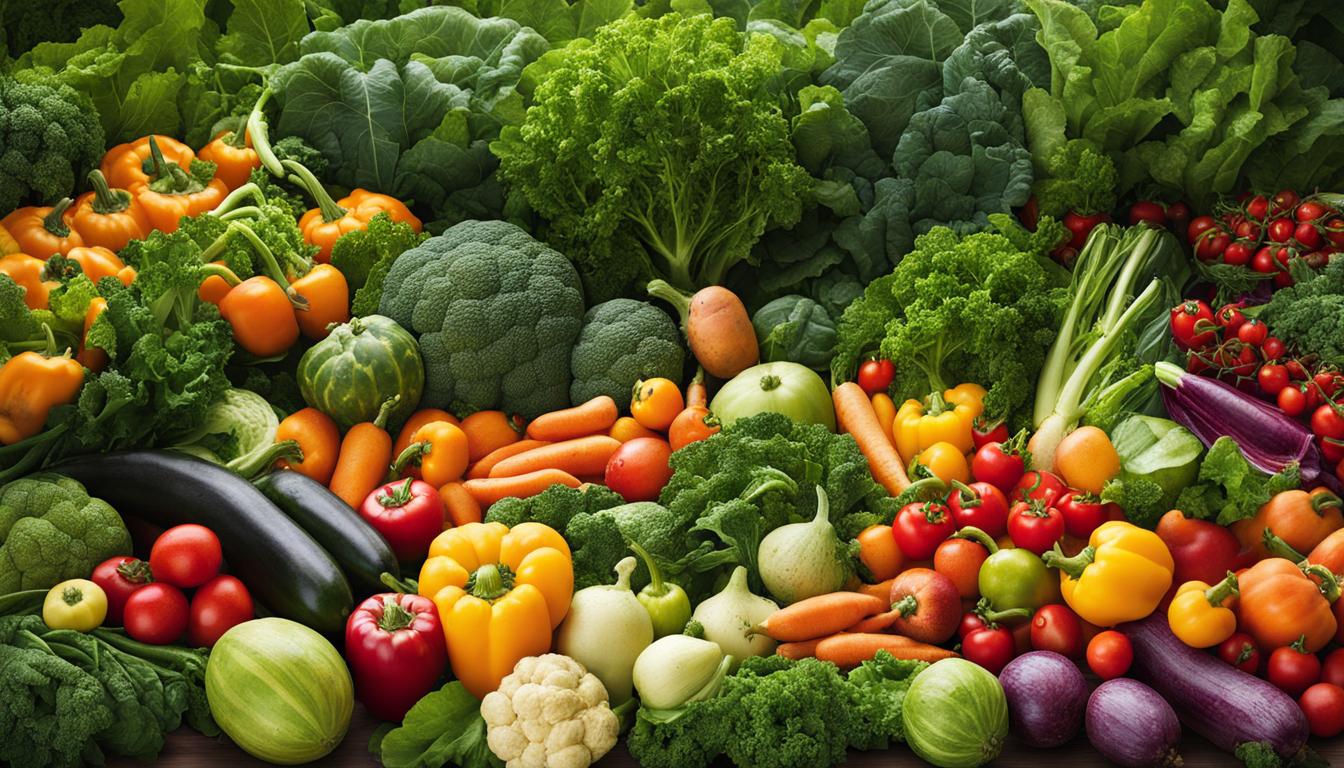Foods high in carotenoids include yams, kale, spinach, watermelon, cantaloupe, bell peppers, tomatoes, carrots, mangoes, and oranges. Incorporating these foods into your diet can help you increase your intake of carotenoids and promote a healthy lifestyle.
Carotenoids are pigments found in plants, vegetables, and fruits that contribute to their vibrant yellow, red, and orange colors. These compounds act as antioxidants in the human body and can be converted into vitamin A. Consuming carotenoids through the diet is essential for maintaining good health. Not only do they provide antioxidant protection, but they also offer a range of other health benefits.
There are two major types of Carotenoids: carotenes and xanthophylls. Carotenes include β-carotene, α-carotene, lycopene, phytoene, phytofluene, zeta-carotene, and neurosporene, are unoxygenated terpenes, whereas xanthophylls, such as lutein, zeaxanthin, and β-cryptoxanthin, are oxygenated. (Moran 2018)
Carotenoids are essential nutrients for mammals, but they are unable to synthesize them; instead, a dietary intake of these compounds is required. Carotenoids are classified as carotenes (hydrocarbon carotenoids), such as α- and β-carotene, and xanthophylls (oxygenate derivatives) including zeaxanthin, astaxanthin, fucoxanthin, lutein, α- and β-cryptoxanthin, and canthaxanthin. (Avila -Roman 2021)
Key Takeaways:
- Carotenoids are pigments found in plants, vegetables, and fruits that act as antioxidants.
- They can be converted into vitamin A and offer numerous health benefits.
- Common types of carotenoids include alpha carotene, beta carotene, beta cryptoxanthin, lutein, zeaxanthin, and lycopene.
- High carotenoid foods include yams, kale, spinach, watermelon, cantaloupe, bell peppers, tomatoes, carrots, mangoes, and oranges.
- Incorporating carotenoid-rich foods into your diet can enhance your overall well-being.
Highest Carotenoid Foods
Some of the highest carotenoid foods include:
- Sweet potatoes: Packed with beta-carotene, the vibrant orange color of sweet potatoes comes from this powerful carotenoid.
- Carrots: Like sweet potatoes, carrots are an excellent source of beta-carotene and other carotenoid compounds like alpha-carotene and lutein.
- Tomatoes: Rich in lycopene, a red carotenoid pigment that gives tomatoes their vibrant color.
- Spinach and kale: These leafy greens are excellent sources of lutein and zeaxanthin, two carotenoids important for eye health.
- Winter squash: Varieties like butternut squash, pumpkin, and acorn squash contain high levels of alpha-carotene and beta-carotene.
- Red and yellow bell peppers: Loaded with carotenoids like capsanthin, capsorubin, beta-cryptoxanthin, and zeaxanthin.
- Corn: Particularly rich in lutein and zeaxanthin.
- Cantaloupe and other orange melons: Good sources of beta-carotene.
- Papaya: High in beta-cryptoxanthin and beta-carotene.
- Broccoli: Provides a good amount of lutein and beta-carotene.
In general, deeply colored fruits and vegetables, especially those with red, orange, and yellow hues, tend to be high carotenoid foods, with the highest carotenoid content. Cooking and processing can sometimes degrade carotenoid levels, so eating these foods raw or lightly cooked may help maximize their carotenoid content.
How Carotenoids Work and Their Health Benefits
Carotenoids play a crucial role in supporting overall health and well-being. They are classified into two main groups: xanthophylls and carotenes. Let’s delve into how these carotenoids work and explore their numerous health benefits.
Xanthophylls: Yellow Pigments for Eye Health
Xanthophylls, such as lutein and zeaxanthin, are yellow pigments that contribute to the vibrant colors of fruits and vegetables. These carotenoids are particularly beneficial for eye health. Research suggests that consuming foods rich in xanthophylls may help protect against age-related macular degeneration, a leading cause of vision loss in older adults.
“Lutein and zeaxanthin are carotenoid pigments that impart yellow or orange color to various common foods such as cantaloupe, pasta, corn, carrots, orange/yellow peppers, fish, salmon and eggs. Their role in human health, in particular the health of the eye, is well established from epidemiological, clinical and interventional studies. They constitute the main pigments found in the yellow spot of the human retina which protect the macula from damage by blue light, improve visual acuity and scavenge harmful reactive oxygen species. They have also been linked with reduced risk of age-related macular degeneration (AMD) and cataracts.” (Abdel-Aal el-SM 2013)
Some excellent sources of xanthophylls include:
- Kale
- Spinach
- Summer squash
- Pumpkin
- Avocado
- Yellow-fleshed fruits
- Corn
- Egg yolks

Carotenes: Orange Pigments Beneficial for Growth
Carotenes, such as beta carotene and lycopene, are responsible for the orange hues found in various fruits and vegetables. In addition to providing vibrant colors, these carotenoids play an essential role in plant growth and development.
“Lycopene, a carotene with bright red pigment in ripe red tomatoes, is routinely consumed by humans today. The foods rich in lycopene are usually tomato products, such as, catsup, tomato sources, tomato juice, etc., and some other fruit, such as watermelon. Lycopene can be detected in human circulation and in tissues in both all-trans and cis forms. As a lipophilic antioxidant, it has been demonstrated as one of the most efficient singlet-oxygen-quenchers. Human studies linked intakes of tomato and lycopene and serum or plasma lycopene concentrations to the subsequent development of cancers, reduction of degenerative disease, and reduced risks of cardiovascular disease.” (Tang 2013)
Some top food sources of carotenes include:
- Carrots
- Cantaloupe
- Sweet potatoes
- Papaya
- Pumpkin
- Tangerines
- Tomatoes
- Winter squash
By incorporating these high carotenoid foods into your diet, you can maximize your intake of these valuable compounds and support your overall health and well-being. To make it easier, you can explore carotenoid-rich recipes and experiment with new and delicious ways to enjoy these nutrient-packed foods.

Outlook and Precautions
Incorporating foods high in carotenoids into your diet can provide many benefits for your overall health. These powerful antioxidants, found in a variety of vegetables and fruits, can help boost your immune system and protect against oxidative stress.
Carrots, sweet potatoes, spinach, kale, tomatoes, bell peppers, and oranges are all excellent sources of carotenoids. By including these vibrant and nutritious foods in your meals, you can easily increase your carotenoid intake.
While carotenoid supplements are available, it is generally recommended to obtain these compounds naturally through food sources. Whole foods provide a range of additional essential nutrients and fiber that are not present in isolated supplements.
Before making any significant changes to your diet or considering dietary supplements, it is important to consult with a healthcare professional. They can provide personalized advice and guidance based on your individual needs and any existing health conditions. It is particularly important to be cautious with high levels of vitamin A, as excessive intake can be toxic.
FAQ
What are carotenoids?
Carotenoids are pigments found in plants, vegetables, and fruits that contribute to their vibrant yellow, red, and orange colors.
What are the types of carotenoids?
Common types of carotenoids include alpha carotene, beta carotene, beta cryptoxanthin, lutein, zeaxanthin, and lycopene.
What are some high carotenoid foods?
Foods that are rich in carotenoids include yams, kale, spinach, watermelon, cantaloupe, bell peppers, tomatoes, carrots, mangoes, and oranges.
What are the health benefits of carotenoids?
Carotenoids act as antioxidants in the body, support eye health, and boost the immune system. Carotenoids like lycopene, astaxanthin, and beta–carotene possess inherent UV-absorbing properties, aiding in the prevention of UV-induced damage to the skin.
Can I take carotenoid supplements?
While carotenoid supplements are available, it is best to obtain these compounds naturally through food sources to maximize their antioxidant effects. Consult with a healthcare professional before considering dietary supplements.
Are there any precautions when consuming carotenoids?
High levels of vitamin A can be toxic, so it’s important to consult with a healthcare professional before making significant changes to your diet or considering dietary supplements.


